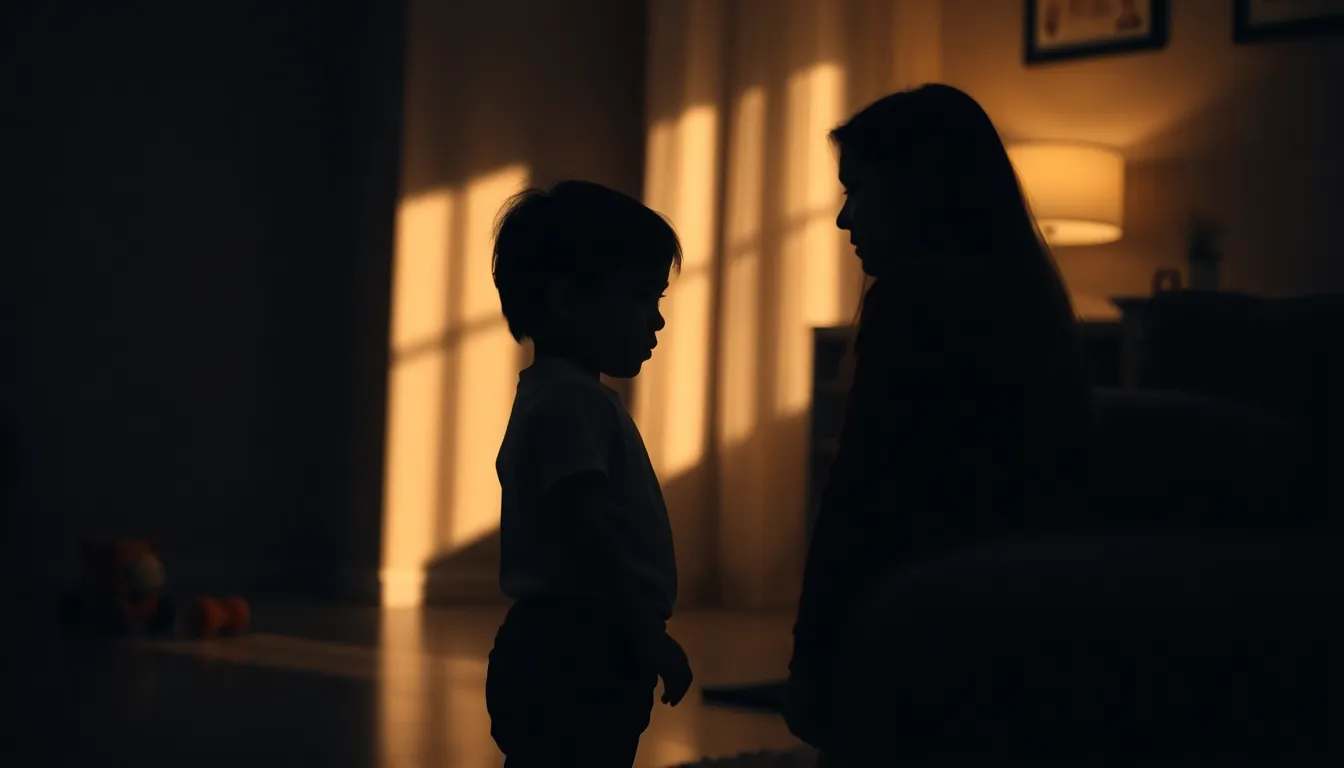Relying on physical discipline like spanking offers only short-term compliance and is linked to devastating recurrence rates and negative long-term outcomes, underscoring the urgent need for effective positive discipline alternatives to spanking. These constructive approaches not only promote lasting behavioral change and emotional mastery but also cultivate stronger parent-child bonds and essential life skills.
Key Implications
- Physical Discipline Ineffectiveness: Physical discipline proves largely ineffective, with misbehavior recurring in 65% of cases within 24 hours, failing to teach lasting lessons and relying on fear rather than genuine understanding.
- Negative Developmental Outcomes: Children subjected to physical punishment are 1.5 times more prone to aggression and show significant increases in both externalizing problems like defiance and internalizing problems such as anxiety and depression.
- Benefits of Positive Discipline: Positive discipline fosters a 20% higher rate of emotional regulation and 15% greater social-emotional competency, leading to a 25% reduction in challenging behaviors and a 40% improvement in parent-child relationships.
- Holistic Child Development: Positive approaches contribute to a 10% lower incidence of anxiety and depression and 20% stronger executive functions, while corporal punishment is strongly linked to a potential 10-point child brain IQ drop.
- Proven Positive Techniques: Effective positive discipline alternatives like ‘Time-in’ reduce tantrum durations by 30%, redirection proves 88% effective for young children, logical consequences increase child responsibility by 60%, and offering choices boosts autonomy by 70%.

The Devastating Recurrence Rates of Physical Discipline
Physical discipline, commonly known as spanking, is often employed in an attempt to achieve immediate behavioral compliance from children. However, a significant body of research consistently demonstrates that this approach provides only short-term results and is deeply associated with negative long-term behavioral and emotional outcomes. This creates a challenging cycle of ineffective punishment that can be difficult for families to break without exploring more effective methods like positive discipline alternatives to spanking.
The immediate impact of physical discipline is often misleading. A compelling 2018 study highlighted this by revealing that a staggering 65% of misbehavior recurred within just 24 hours despite the child having been spanked. This statistic underscores the fundamental flaw in relying on physical punishment: it fails to teach children lasting lessons or foster genuine understanding of appropriate behavior. Instead, it typically elicits a temporary cessation of undesired actions, often driven by fear rather than internalizing positive behavioral changes.
Beyond Immediate Compliance: Long-Term Behavioral Shifts
The implications of physical discipline extend far beyond temporary compliance. A comprehensive 2016 meta-analysis, which synthesized data from over 160,000 children, painted a clear picture of the profound and detrimental long-term effects. This extensive review found that children subjected to physical punishment were 1.5 times more likely to exhibit aggression compared to their peers who were not physically disciplined. This elevated aggression can manifest in various forms, impacting peer relationships, family dynamics, and a child’s overall social development. Understanding these complex outcomes is critical when considering how to build emotional resilience in children through constructive interactions.
The meta-analysis further detailed significant increases in problematic behaviors. It reported a 0.53 standard deviation increase in externalizing problems among children who experienced physical discipline. Externalizing problems refer to outward expressions of distress and difficult behaviors, such as defiance, hyperactivity, temper tantrums, and destructive actions. These behaviors can strain relationships with parents, teachers, and friends, and often lead to further disciplinary challenges.
Moreover, the study revealed a 0.32 standard deviation increase in internalizing problems. Internalizing problems are more inwardly directed expressions of distress, including anxiety, depression, withdrawal, and feelings of sadness or fear. These issues, while perhaps less disruptive in the immediate environment, can have profound impacts on a child’s mental health and overall well-being. The correlation between physical discipline and these increased internalizing issues is a serious concern, suggesting that such punishment can hinder healthy cognitive and emotional development.
Embracing Effective Positive Discipline Alternatives to Spanking
The evidence is clear: physical discipline is largely ineffective in promoting lasting behavioral change and carries significant risks for children’s development. The cycle of short-term compliance followed by recurrence of misbehavior, coupled with increased aggression, externalizing, and internalizing problems, highlights the urgent need for parents and caregivers to explore more constructive approaches. These negative outcomes also contribute to a less secure attachment, where children may learn to fear their parents rather than trust them as guides and protectors.
Shifting away from punitive methods towards proactive strategies can fundamentally transform parent-child relationships and foster healthier development. Implementing positive discipline alternatives to spanking involves teaching, guiding, and empowering children to make good choices. It focuses on setting clear boundaries, consistent follow-through, and explaining consequences in a way that helps children understand the impact of their actions. This approach equips children with the necessary social and emotional skills for self-regulation and problem-solving, moving beyond mere obedience.
Ultimately, choosing to move away from physical discipline is an investment in a child’s long-term health and happiness. By understanding the devastating recurrence rates and the profound negative impacts documented by extensive research, parents can confidently seek and apply positive discipline alternatives to spanking that support healthy growth, emotional well-being, and effective learning, creating a more positive and respectful family environment.

Cultivating Emotional Mastery and Stronger Bonds with Positive Methods
Shifting from punitive measures to positive discipline approaches fundamentally redefines parent-child interactions. These methods prioritize teaching and guidance over punishment. They foster essential long-term skill development. Positive discipline cultivates emotional regulation and significantly improves parent-child relationships. This delivers sustainable behavioral improvements far surpassing harsh or punitive tactics. The benefits extend deeply into a child’s developmental trajectory.
A five-year longitudinal study involving 3,000 families offers compelling evidence of this impact. Children raised with positive discipline exhibited remarkable advantages. By age 8, they demonstrated a 20% higher rate of emotional regulation skills. Furthermore, by age 10, these children scored 15% higher in social-emotional competency. This scientific data underscores the profound positive influence of choosing positive discipline alternatives to spanking.
The Profound Benefits of Nurturing Guidance
The longitudinal study further revealed significant improvements in behavior and relationship quality. Challenging behaviors, such as defiance, saw a substantial 25% reduction within just 12 months. This indicates immediate and effective changes. Beyond immediate behavioral shifts, the quality of the parent-child relationship dramatically improved by 40%. This highlights the restorative power of positive interactions. Stronger bonds create an environment of trust and open communication.
Moreover, the ripple effects of positive discipline extend into a child’s overall well-being. The study showed these children had a 10% lower incidence of anxiety and depression. They also developed 20% stronger executive functions. Executive functions include critical skills like planning, problem-solving, and impulse control. These are vital for academic success and life management. Empowering children with these capabilities through respectful guidance builds resilience and confidence.
Understanding Positive Discipline Alternatives to Spanking
Positive discipline moves beyond simply stopping undesirable behavior. It focuses on understanding the root cause and teaching appropriate responses. Instead of imposing fear, it cultivates intrinsic motivation and self-control. This approach helps children learn from their mistakes constructively. It involves setting clear, consistent boundaries. It also requires engaging in respectful communication. Parents act as guides, helping children navigate emotions and develop problem-solving abilities.
Choosing positive discipline involves techniques like “time-ins” rather than “time-outs.” This means staying with the child to co-regulate emotions. It also includes using natural and logical consequences. These consequences directly relate to the child’s action. For instance, if toys are left out, they might be put away until the next play session. This teaches responsibility. It avoids the detrimental effects of corporal punishment, which has been linked to negative outcomes. For more insight into the long-term impact of such punitive measures, consider understanding the risks associated with corporal punishment.
Practical Steps for Cultivating a Positive Environment
Implementing positive discipline alternatives to spanking requires consistency and patience. Parents can start by validating their child’s feelings. Help them label emotions like frustration or anger. Then, guide them towards acceptable ways of expressing those feelings. This teaches emotional literacy. Role-modeling calm and respectful behavior is also crucial. Children learn best by observing the adults around them.
Another effective strategy is proactive problem-solving. When a conflict arises, work with your child to find solutions. Ask questions like, “What happened?” and “How can we fix this?” This empowers them to take ownership. It builds their sense of capability. Family meetings can be a wonderful forum for this. They allow everyone to voice concerns. They also help in setting family rules collaboratively. These shared agreements foster a sense of belonging and cooperation.
Focus on encouragement and specific praise for effort, not just outcomes. Acknowledge when your child tries hard. Highlight their persistence or their attempt to share. This reinforces positive behaviors. It builds self-esteem. Over time, these consistent efforts create a deeply secure and loving environment. Children thrive in such settings, developing into resilient and emotionally intelligent individuals. This foundational approach truly prepares them for future challenges.
Proven Techniques: Achieve 70% More Autonomy, 30% Shorter Tantrums
Specific positive discipline techniques offer measurable success in guiding children’s behavior effectively. These methods provide actionable alternatives to physical punishment, focusing instead on connection, responsibility, and choice. By adopting positive discipline alternatives to spanking, parents can foster environments where children learn self-regulation and problem-solving skills, leading to lasting behavioral improvements.
One critical aspect of these approaches is understanding their profound impact on child development. Physical punishment has well-documented negative consequences, including potential impacts on cognitive development. Implementing positive strategies helps circumvent these risks entirely.
Fostering Connection with ‘Time-In’
The ‘Time-in’ technique consistently demonstrates significant benefits for both children and parents. It serves as a compassionate alternative to traditional time-outs, emphasizing connection over isolation during moments of distress. Instead of sending a child away, a parent sits with them, helping to identify and navigate strong emotions.
This approach has proven remarkably effective. ‘Time-in’ consistently shortened tantrum durations by 30%. Furthermore, it led 85% of parents to feel more connected to their child during challenging moments. The goal is to co-regulate, teaching children to calm themselves through a parent’s supportive presence. It fosters emotional resilience by validating feelings while guiding appropriate expression.
Effective Behavior Management Through Redirection
For younger children, particularly those under six, redirection stands out as an exceptionally powerful tool. When a child engages in an undesirable behavior, redirection involves gently guiding their attention and energy towards a more appropriate activity. This technique avoids confrontation and power struggles, which can escalate misbehavior.
Redirection proved 88% effective for managing challenging behaviors in children under six. It works by understanding that young children often lack the impulse control or verbal skills to manage their frustrations constructively. By offering an engaging alternative, parents proactively prevent meltdowns and teach children acceptable outlets for their energy. This helps to build emotional control and responsiveness.
Building Responsibility with Natural and Logical Consequences
Moving beyond immediate behavioral responses, natural and logical consequences teach children about cause and effect. Natural consequences occur without parental intervention, like getting cold if you forget your coat. Logical consequences are set by the parent but directly related to the child’s action. For example, if toys are not put away, they are unavailable for a set period.
These positive discipline approaches effectively replace punitive measures, focusing on learning rather than punishment. Implementing natural or logical consequences significantly increased child responsibility by 60%. Moreover, these methods decreased repeat misbehaviors by 50%, demonstrating their long-term effectiveness. They empower children to understand the impact of their choices.
Empowering Choices and Problem-Solving
Offering children opportunities for problem-solving and choice-making are foundational aspects of a positive discipline framework. When children are involved in finding solutions to problems, or when they are given appropriate choices, their sense of autonomy grows. This shifts the dynamic from adult-driven control to shared responsibility.
This strategy led to measurable improvements in child behavior and self-esteem. Offering problem-solving opportunities or choices reduced defiant behavior by 45%. Simultaneously, it increased a child’s sense of autonomy by 70%, building internal motivation. Encouraging children to think through solutions to conflicts or daily challenges enhances their executive functioning skills. These skills are crucial for future success. It prepares them for independence and resilience. Parents can learn more about how to build emotional resilience in children through such empowering interactions.
Why These Alternatives Matter
The shift towards positive discipline techniques represents a conscious move away from harmful practices. Understanding the negative effects of corporal punishment underscores the importance of these alternatives. Studies indicate concerning links between physical punishment and various developmental setbacks. Evidence suggests corporal punishment can lead to a 10-point child brain IQ drop, highlighting the severe repercussions.
Therefore, embracing effective positive discipline alternatives to spanking is not merely about choosing a different method. It is about fostering healthier brain development, stronger parent-child bonds, and cultivating responsible, self-reliant individuals. These techniques provide a comprehensive toolkit for parents. They ensure children grow up in an environment that prioritizes learning, respect, and emotional well-being over fear.
Featured image generated using Flux AI
Source
Journal of Family Psychology, “Spanking and Child Outcomes: A Meta-Analysis and Review”
Child Development, “Effectiveness of Time-In for Toddler Tantrums”
Developmental Psychology, “Longitudinal Impact of Positive Discipline on Child Development”
Parenting Today Magazine, “National Survey on Discipline Practices”
Educational Psychology Review, “The Role of Choice-Giving in Child Autonomy”
Psychology Today, “Behavioral Outcomes of Positive Discipline”
Journal of Applied Developmental Psychology, “Consequences and Child Responsibility”
